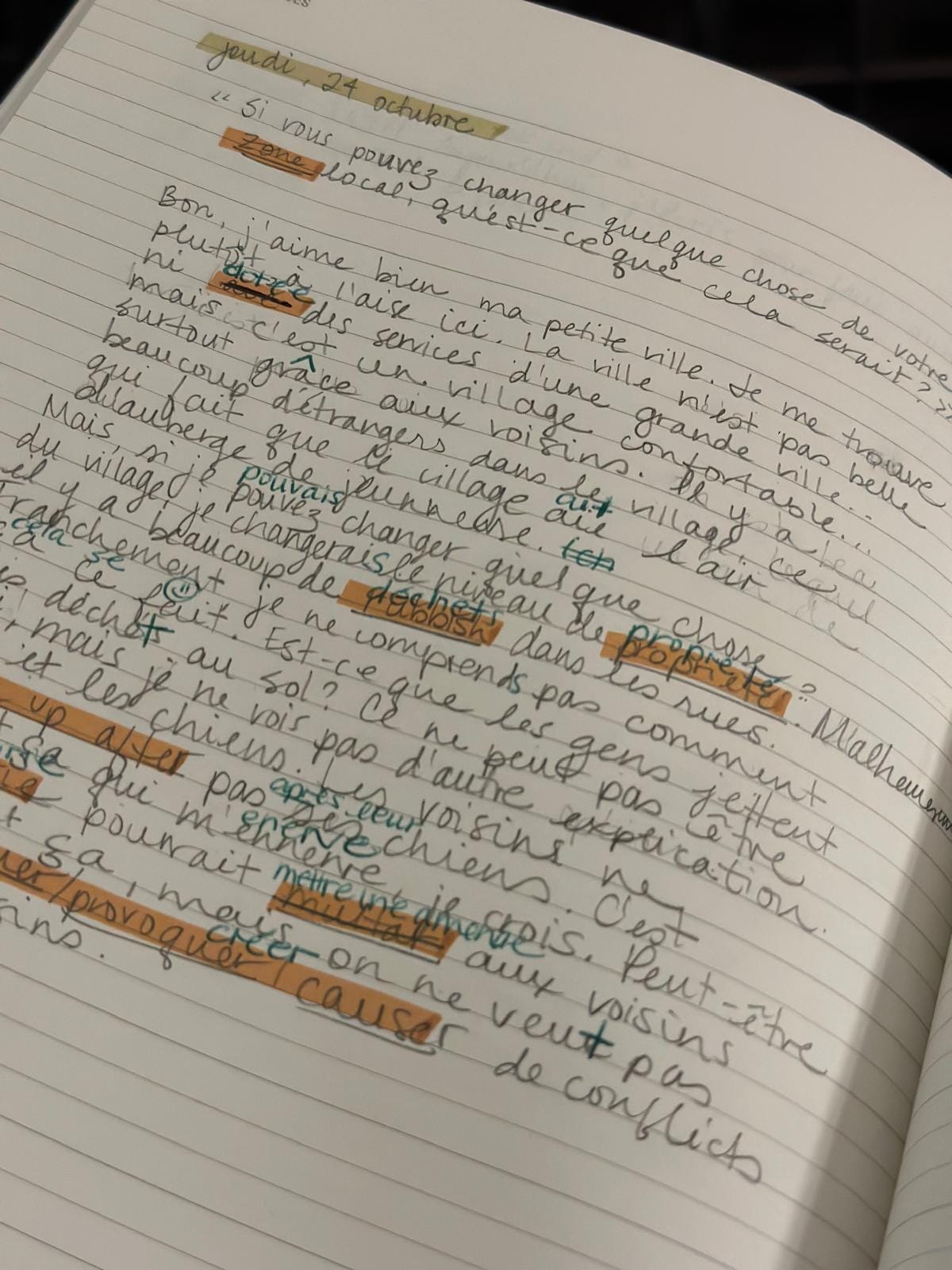This post is part 10 of the series Fresh Foundations which is about helping you create a sustainable and joyful language learning routine. If you subscribe, you’ll get access to the previous posts and receive a new one every weekday in January.
If that sounds like something you’re ready for, let’s get into today’s activity about writing.
The Power of the Writing Process
I know I probably don’t have to convince readers on Substack about how useful the writing process can be, but many, if not most, of the language learners I’ve worked with, despise writing. Of course, there are many reasons for this, but I believe it mainly comes down to frustrations with past writing experiences where they were taught to write a specific type of text, turned it in, and it was returned covered in red pen. Writing is hard, and it’s disappointing to see nothing but mistakes.
Now, with access to AI for practical texts like emails or reports, many of my students feel writing isn’t necessary. 😂 I completely disagree.
Benefits of Writing
I continue to assign my students writing not because I want them to learn how to “produce” a work email but because the writing process itself is extremely valuable for improving overall language skills in at least four ways:
A Slower Pace for Experimentation: Writing is slower than speaking, giving you time to experiment with grammar and vocabulary that’s new for you. You can look up unfamiliar words, check grammar notes, or see if an idiom translates correctly.
Editing and Revising: Writing allows you to edit and refine your work, which isn’t possible with speaking. This process helps you improve accuracy and notice consistent errors, so you know what to focus on in your speaking practice. It takes advantage of the Output Hypothesis and Noticing Hypothesis you learned about in the post about productive skills.
Stress-Free Practice: Unlike speaking, no one has to read your writing until you’re ready. Writing eliminates the emotional stress of immediate interaction (often called the Affective Filter), allowing you to focus on your ideas.
A Record of Progress: Writing leaves a record of your work. You can look back and see how much you’ve improved over time, which is both motivating and empowering.
If you’re learning a language with a different script, writing becomes even more essential. You’ll need to practice writing even more to master the additional skill.
A Simple Writing Process to Try
If you haven’t yet incorporated writing into your routine, here’s a simple process I recommend:
Set a Timer for 15-20 Minutes: Decide on a topic (I share writing prompts at three levels every Thursday in the chat if you need inspiration) and write continuously for the entire time. Don’t stop to overthink or edit.
Use Your First Language for Unknown Words: If you don’t know a word, write it in your first language. You can look it up later.
Look Up Unknown Words: After writing, check the meanings of the unknown words. Write them in the vocabulary section of your notebook so you can review them regularly.
Get Feedback: Take a photo of your writing and ask ChatGPT or your teacher for corrections and feedback. Be specific about what you want help with, such as verb tenses or sentence structure.
Add Grammar Notes: If your feedback highlights a grammar point to work on, add it to the grammar section of your notebook. Write example sentences to practice and incorporate the rule.
Consider Rewriting: If you’re ready to commit, consider rewriting or repeating a text on the same topic. This will allow you to use the grammar and vocabulary you’ve learned from your writing session.

Success Stories from Writing and Rewriting
I can’t tell you how many times I’ve seen students improve their general level of English simply by writing and rewriting texts. When I worked with teenage students at the language school, I assigned them a text, gave them actionable feedback, and had them rewrite their texts. This process helped them expand their range and improve accuracy, which also translated to their speaking skills.

I often assign my adult students a journal over winter and spring breaks. Even after all these years, I’m still impressed when I see how much progress there is between the first and last entries. That’s the reason I talk about writing so much. I’ve seen how well it works!
Your Task
Your task for today is to try the simple writing activity I have outlined above. Take a look in the chat if you’re looking for prompt ideas. After you write, quickly reflect on the process:
Did you notice any gaps in your grammar/vocabulary knowledge? Were there any phrases you weren’t sure about?
Were you able to include any phrases or words in your text that you’ve recently come across in your reading or listening materials?
If you ask a teacher or AI for feedback, what grammatical mistakes are common for you?
What are you proud of?
If you’re finding these articles useful, please consider sharing Love to Lingo with other language learners or teachers who might find them useful, too.






I love writing! You can get all of the joy of output in your target language and take all of the time in the world to get your thoughts out. At times, I've bought journals with prompts and used those to help me with my writing. In some cases, the prompts were in English, but I would write in my target language.
Great post! Talking about AI, I came across a platform devoted to languages. The most interesting thing for me is that you get answers to your language questions from both AI and native speakers. It’s called HiNative.